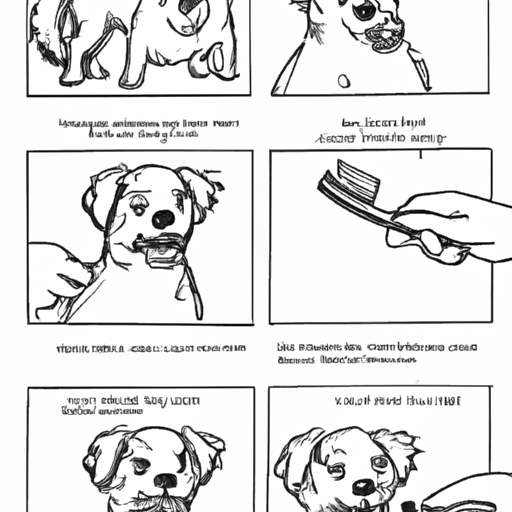Brushing your small dog’s teeth might seem like a daunting task, especially if your pet is particularly fidgety or nervous. However, it’s an essential part of maintaining your furry friend’s overall health. With the right approach, tools, and a little patience, you can turn this chore into a bonding activity that both of you can look forward to.
Key Takeaways:
- Importance of dental hygiene in dogs
- Step-by-step guide on brushing your small dog’s teeth
- Tips and tricks to make the process easier
- Common questions about dog dental health
Table of Contents
- The Importance of Dental Hygiene in Dogs
- Equipment You Will Need
- Preparation Before Brushing
- Step-by-Step Guide to Brushing Your Small Dog’s Teeth
- Tips and Tricks for Easy Brushing
- Frequently Asked Questions
The Importance of Dental Hygiene in Dogs
Just like humans, dogs are prone to dental diseases if their oral hygiene is neglected. Plaque and tartar can build up on their teeth, leading to gum disease, tooth decay, bad breath, and even serious health complications like heart disease.
The American Veterinary Dental College reports that most dogs show signs of periodontal disease by the age of three. Small dogs, in particular, are more susceptible due to their crowded teeth. Regular brushing can significantly reduce these risks and ensure your pet’s mouth stays healthy.
Equipment You Will Need
Before you start brushing your small dog’s teeth, you’ll need to gather the right tools. Dog-friendly toothpaste and a dog toothbrush are essential. You can also consider dental chews, oral rinses, and dental toys as supplementary tools for maintaining your dog’s oral health.
Here’s a detailed look at the tools you will need, which are also available on One Top Dog
| Equipment | Description |
|---|---|
| Dog toothbrush | A toothbrush designed specifically for dogs has softer bristles and a longer handle for easier reach. |
| Dog-friendly toothpaste | Never use human toothpaste for your dog as it can be harmful if swallowed. Dog toothpaste often comes in pet-friendly flavors. |
| Dental chews and oral rinses | These help reduce plaque and tartar buildup and freshen your dog’s breath. |
| Dental toys | Designed to clean your dog’s teeth as they chew, these toys also provide stimulation and playtime. |
Preparation Before Brushing
Before you start brushing, it’s important to get your dog used to having their mouth touched. Spend a few days gently massaging your dog’s lips with your finger. Gradually, move on to rubbing their gums and teeth. Always provide positive reinforcement with treats or praise to make the experience enjoyable.
Step-by-Step Guide to Brushing Your Small Dog’s Teeth
- Choose a quiet place free from distractions.
- Sit your dog on your lap or at a comfortable level where you can easily reach their mouth.
- Apply a small amount of dog-friendly toothpaste to the toothbrush.
- Lift their upper lip gently and begin brushing in a circular motion. Make sure to reach the back molars and canines, which can be a hotspot for tartar buildup.
- Be gentle to avoid hurting your dog’s gums or causing any discomfort.
- Aim to brush for about 30 seconds to a minute on each side.
- End the session with a reward to create positive associations with tooth brushing.
Tips and Tricks for Easy Brushing
- Start brushing your dog’s teeth when they’re young so they can get used to the process early.
- If your dog resists brushing, try using dental wipes or a finger toothbrush.
- Brush your dog’s teeth at least 3-4 times a week, although daily brushing is ideal.
- Regularly check your dog’s mouth for signs of gum disease such as redness, swelling, bad breath, and loose teeth. If you notice any, schedule an appointment with your vet.
- In addition to brushing, consider adding dental chews or toys to your dog’s routine. One Top Dog offers a variety of options that your pet might enjoy.
Frequently Asked Questions
1. How often should I brush my small dog’s teeth?
Ideally, you should brush your dog’s teeth every day. However, if this isn’t possible, aim for at least 3-4 times a week.
2. Can I use human toothpaste for my dog?
No. Human toothpaste contains ingredients that can be harmful to dogs if swallowed. Always use a dog-friendly toothpaste.
3. What if my dog doesn’t let me brush their teeth?
You can try using dental wipes or a finger toothbrush as alternatives. Also, providing positive reinforcement such as treats and praises can help your dog feel more comfortable.
4. What are the signs of dental problems in dogs?
Symptoms can include bad breath, red or swollen gums, yellow-brown crust on teeth, difficulty eating, and changes in chewing habits. If you notice any of these signs, consult your vet immediately.
5. Can dental chews replace brushing?
While dental chews can help clean your dog’s teeth and freshen their breath, they should not replace regular brushing. They are best used as a supplement to your dog’s oral care routine.
Remember, a healthy mouth contributes to a healthy dog. With patience and consistency, you can make tooth brushing a beneficial and enjoyable habit for your small dog. For more tips and advice on dog care, check out this One Top Dog page.



